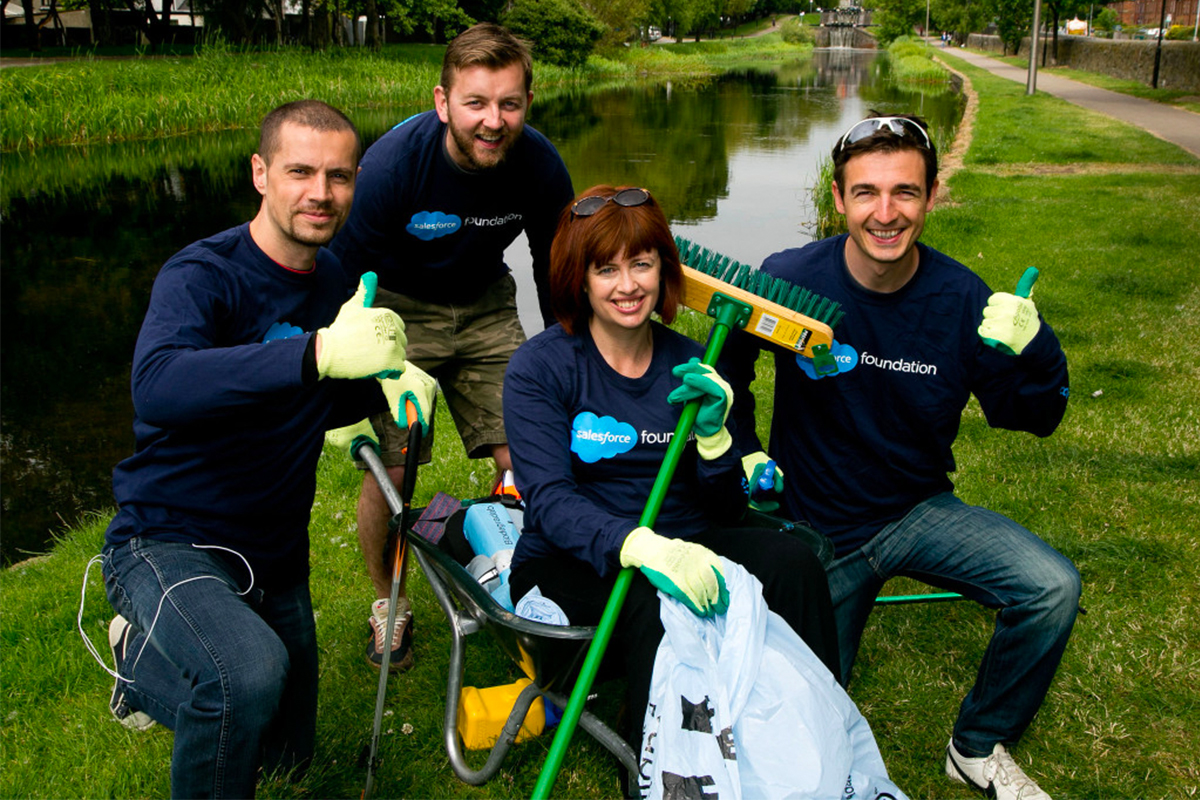Volunteering typically conjures images of caring for starving children in remote communities or distributing food to those who aren’t able to provide for themselves.
While this may seem benevolent in its intent, Chris Jarvis, the Co-Founder of Realized Worth, a global agency that facilitates employee-led volunteering, believes that this approach can encourage the opposite behaviours from what you’re hoping to achieve.
Jarvis is also known for his thought leadership on employee volunteering and work with Fortune 500 companies. Adobe, Microsoft, Apple, Deloitte, SAP and Tripadvisor are just some of the agency’s clients to date.
“We want people to come into [volunteering] because they’re going to get something out of it,” he says. “We do not want people who are going to objectify others and help them with their problems and then walk away like, ‘Yeah that’s good. I hope they make it.’”
“We called the company Realized Worth because when you go to a place and you receive a kind of an insight or perspective on life that can open your eyes, that’s a gift.” – Chris Jarvis
While many of us can relate to the feeling of having a life filled with responsibilities, giving back is frequently perceived as something that steals our time when in fact this couldn’t be further from the truth.
“The number one thing people get wrong about volunteering is that they perceive it as something that’s going to be a cost. They don’t understand the true benefit of it. After you have the experience then you begin to recalibrate,” he explains.
For Jarvis, the real unexplored value in volunteering is linked to workplace culture, networking, empathy and enabling people to become a better version of themselves.
For employees, who can often have high cortisol levels due to stress, volunteering can present a perfect opportunity to experience a release of endorphins.
“The compulsion to help others is so fundamental to our survival as a species and that’s what we call a helper’s high. It is equal in its intensity to yoga, a runner’s high and sexual activity. It’s at the same level,” he says.
From transactional to transformative volunteering

A winning strategy, Jarvis asserts, caters to people’s interests and creates a space for everyone to participate.
Shifting the focus from the activities that are performed to what truly motivates people is the key to transformative volunteering, he explains, adding that the three fundamental changes that can take place are challenging the way you see yourself in the world, questioning your beliefs and changing the way you act in the world.
According to Jarvis, these types of changes within a person have lasting impacts and encourage a shift from helping people to a place of belonging.
“We called the company Realized Worth because when you go to a place and you receive a kind of an insight or perspective on life that can open your eyes, that’s a gift, and you can realise your true worth when you receive it and can begin to live out of that,” he shares.
Jarvis says that where companies can sometimes go wrong is with a transactional approach that reflects the notion of giver and receiver.
“[Volunteering is] mostly about how many people can we get to show up and do a bunch of hours and do a bunch of things? What we’re trying to do as a company is say, ‘That’s not bad.’ Helping isn’t bad, but helping leaves a lot of value on the table. We need to go from a place of helping and move people to a place of belonging,” he points out.
Interestingly, one of the most valuable aspects of volunteering at Salesforce is the contribution that employees are able to make to their organisations.
“We’ve found that volunteering can help all of us think differently. A new environment can stimulate new ideas and abilities to tackle problems in new ways,” confirms Davinder Mann, Senior Director, Philanthropy APAC at Salesforce. “Our employees are able to learn new skills, tap into new experiences and gain new perspectives – things that don’t just impact them personally, but add value to who they are as a member of our team.”
Far from being an activity on the organisation’s periphery, Mann insists, “The role that business can play in society, and the expectation to balance financial return with social impact, is greater than ever.”
At the heart of the company’s volunteering efforts is placing the employee in a position where they feel compelled to offer their support in ways that are meaningful to them.
“Open programs provide a great volunteering framework that embraces employees’ passions and interests – helping to increase employee buy-in and engagement. It’s OK to let go and let your employees give how and where they choose,” he says.
Volunteering considerations
Jarvis advises that volunteers reflect on their first experience by asking themselves two questions: What did you experience? Was it what you expected?
“Even if people don’t answer, they’re in a sense-making mode and thinking through that will help with the rewiring,” he explains.
However, in order to grow new neural pathways in the brain, there needs to be constant exposure to an experience over an extended period of time, which is something that may put people off. Jarvis recommends undertaking a subsequent volunteering experience within six to eight weeks after the first one.
While many of us have become accustomed to virtual interactions, when it comes to volunteering, it’s also best to be able to see the person you’re helping to spark empathy.
Read Next: Business leaders tackling modern slavery







